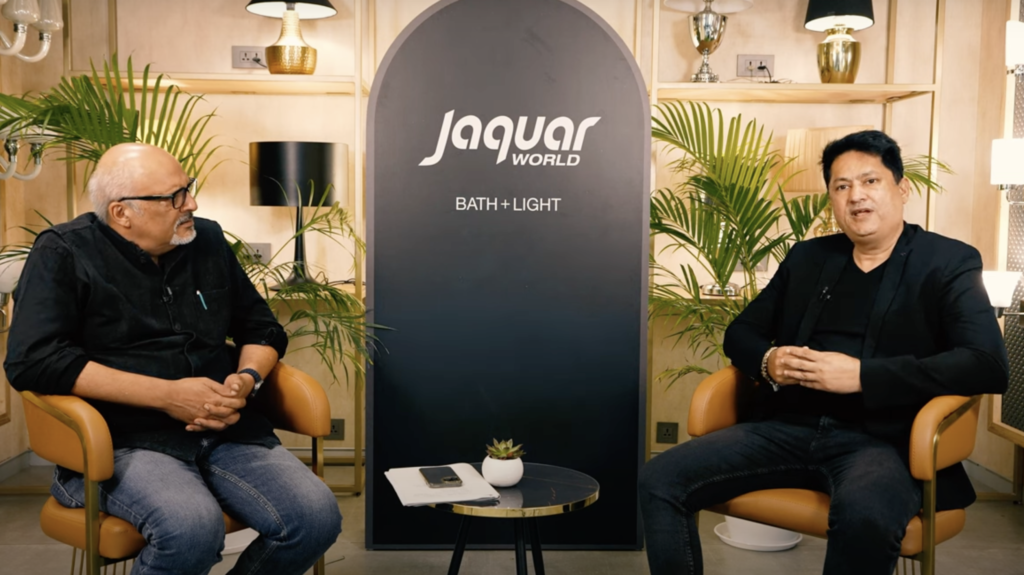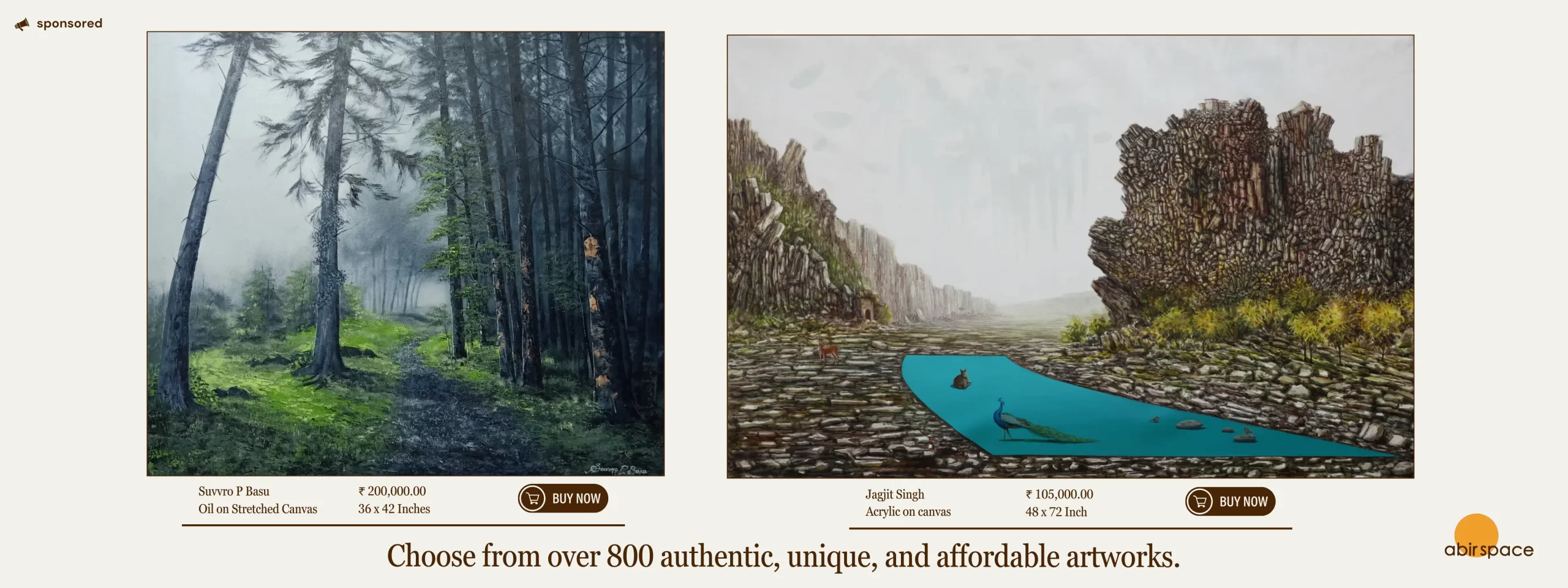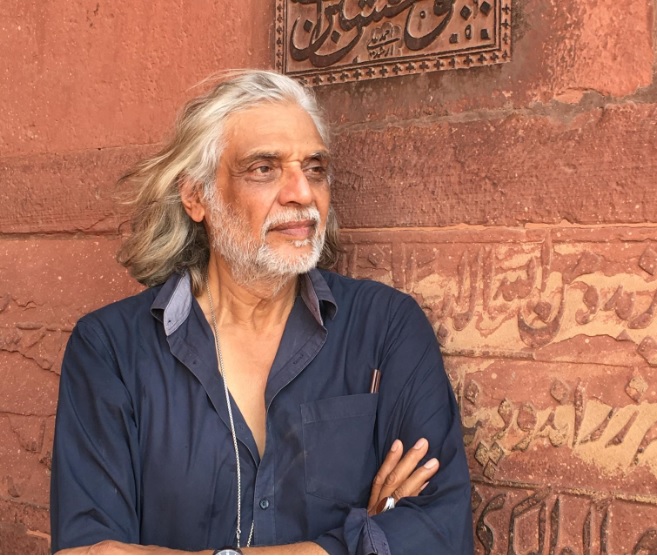Welcome to Samvaad, where art meets conversation, and inspiration knows no bounds. Here we engage in insightful conversations with eminent personalities from the art fraternity. Through Samvaad, Abir Pothi aims to create a platform for thought-provoking discussions, providing readers with an exclusive glimpse into the creative processes, inspirations, and experiences of these creative individuals. From curating groundbreaking exhibitions to pushing the boundaries of artistic expression, our interviews shed light on the diverse perspectives and contributions of these art luminaries. Samvaad is your ticket to connect with the visionaries who breathe life into the art world, offering unique insights and behind-the-scenes glimpses into their fascinating journeys.
In this edition of Samvaad, we look into the world of architecture with Jignesh Modi, an esteemed architect hailing from Surat. Engaging in a conversation with Nidheesh Tyagi from Abir Pothi, Jignesh shares insights into his career journey, the architectural landscape of Surat, and his unique approach to design.
From discussing Surat’s rich history as a forward-looking city to envisioning its future as one of the fastest-growing urban centres globally, Jignesh paints a vivid picture of his hometown’s evolution and aspirations. He emphasizes the importance of preserving Surat’s cultural identity while embracing modern advancements and global influences, striking a delicate balance between tradition and innovation. Jignesh further elaborates on his experiences in the field, highlighting the collaborative efforts involved in creating transformative architectural projects. Drawing from his partnership with his wife Monica, also an architect, he reflects on the division of labour, the significance of originality in design, and the value of encouraging creativity within the team.
Touching upon the evolving role of technology in architecture, Jignesh challenges the notion that complexity equates to superior design. He advocates for a human-centric approach, emphasizing the need for spaces that prioritize functionality, comfort, and user experience over mere aesthetics. Throughout the discussion, Jignesh shares anecdotes, challenges, and triumphs, offering valuable lessons for aspiring architects and designers. His dedication to authenticity, innovation, and community engagement serves as an inspiration, underscoring the transformative power of architecture in shaping societies and enriching lives.
Join us as we embark on this enlightening dialogue with Jignesh Modi, exploring the intersections of tradition and modernity, creativity and pragmatism, and the timeless allure of architecture in shaping the world around us.
Nidheesh: Hello and welcome to a very special edition of Abir Pothi’s Samvaad. We’re broadcasting live from Surat. This is special because we have a very senior architect from Surat, Mr. Jignesh Modi. First, we will talk about Surat. Could you elaborate on why Surat? You were at MSU, then in Delhi, how did you end up in Surat?
Jignesh: Well, there’s a personal side to it. My father was a central government employee, so he was posted in Delhi when I was born. Because of primary education, he wanted us to stay in Delhi. So for almost 15 years, we stayed there. Then, as he aged a little bit, he wanted to move. He really belonged to Surat, basically. So he wanted to move closer to home. Then we moved to Ahmedabad first for a few years, and then finally to Baroda. That’s how I came to be in Baroda for my architecture. After Baroda, I finished my architecture. I worked for a couple of years with Karan Grover, who’s very well-known all across the world. Then, I finally thought that Surat, even during those times in the late ’90s, was considered the financial capital of Gujarat. So I thought that maybe moving back to Surat to the roots would be a good idea. So I finally moved here.
Nidheesh: What do you think are the peculiarities of Surat? I mean, compared to Ahmedabad and even the other cities in Gujarat. I mean, even compared to Mumbai. Surat is an older city than Mumbai, right? So, how do you see that? What is that authentic, peculiar flavour, the character of this city?
Jignesh: See, Suratis, I won’t say peculiar, but I would say a very special trait of a Surati is that they are known as “Maujila Suratis.” “Mojila” is an Indian word, right..
Nidheesh: It came it came much before mozilla Firefox.
Jignesh: Yes, so that was a good one. So, “Maujila” means fun-loving. Suratis were always fun-loving people. They worked at leisure, and they enjoyed life to the fullest, to the brim. They never cared about the past, never cared about what was going to happen in the future. I believe Suratis are the only people who believe that living in the present makes life livable. And that theory is still prevalent in Surat today. It’s a cosmopolitan city. The population of Surat is 70 lakhs, but I believe the native Suratis might be around 20-25 lakhs. But still, that culture of being a “maujila” person has seeped into the people who have come from outside. So, it’s a “maujilu rangilu” city, always known for its food. As there’s another saying, “Surat nu Jaman, Kashi nu Maran” meaning the food is in Surat, whatever it is, and then you die in Kashi. Your last rights are in Kashi. So, that is what makes Surat very special.
Nidheesh: So, one of the things which is also signature in terms of this non-metropolitan India is how Surat is one of the places which has really grown. Like, it’s also, as you were saying, very inclusive, diverse, respectful, you know, this whole industrial endeavour of people and business. Does it kind of change this design aspect of the city and the infrastructure and the buildings here?
Jignesh: Surat was always forward-looking. It accepted changes; it accepted the Britishers when they first came to India, they accepted them as one of their own. History tells us that they shouldn’t have done it, but then Surat is, as I said, a forward-looking city, has always been, and it always kind of encouraged growth because it had the financial strength. It always encouraged new things. The cultural identity which Surat has has been there for centuries. It is inbuilt in the psyche of a Surati, and Suratis were known for taking risks. Surat had the largest port in India even before the Mughals came in. It was called “choryasi.” Why “choryasi”? The region “choryasi” because it had ships from 84 countries of the world flying in and being in Surat and being, you know, what do you call, “ported” in Surat, docked in Surat, right!
So, since times immemorial, Surat has been welcoming. It has been encouraging business. It has been encouraging infrastructure, and everyone who has come into Surat has seen that potential, and they have kind of built upon it. So, we have never looked back. People from here have never looked back. Major disasters happened, plague happened, floods happened, but it was like a bad dream. Just one year back, if you come and look at Surat, it was moving full steam ahead.
Nidheesh: How do you see the future shaping up now? I mean, because you are part of that future which is being made right now and living in this present as you’re talking about. So, where is Surat going now, and how do you think that, you know, this…
Jignesh: See, Surat has its eyes set on being the fastest-growing city in the world, and that is a fact. It is one of the 10 fastest-growing cities in the world as of now because of its infrastructure. It is now home to the largest office complex in the world, bigger than the Pentagon. The Surat Diamond Bourse spreads over 6.5 million square feet of space, one single building housing almost 5,000 diamond showrooms and businessmen. Surat also has one of the largest textile markets in the world, 4 million square feet, of which I’m proud to say we are a part as designers. See, as you grow, your ambitions grow. As the people grow, their ambitions grow, and they are looking to put a kind of stamp on the world map that we are there, we have arrived. And everyone who’s come to Surat, from politicians from abroad or statesmen, everyone has spoken very positively about Surat.
Nidheesh: Can you let us walk through your own career journey from now to where you started?
Jignesh: See, I worked in Baroda for, I think, two years, and then I came to Surat. When I was in Baroda, I was working with Karan Grover, and he was a very well-known and respected big-shot designer and big-shot architect in India. My journey while being in his office was to learn how to negotiate and deal with high-end clients. That gave me a perspective on what people who are maybe millionaires and billionaires think about their homes, their offices, their lifestyles, and how we deal with that.
When I came to Surat, I was again working with a big-shot designer, Mr. Hemant Khatlawala, and he was, basically, we can say, the top guy in Surat at that time during the ’90s and early 2000s. During the first decade there, I learned how to deal with the psyche of a Surati, the “maujila” Surati, and what they want. Unfortunately, the awareness level of education was never a factor in Surat’s growth. It never was. It was just the ability to make money, to run a good business. That was the main ability of Suratis. I think, of all Gujaratis, they are very good at finances, but not too good at education. Things are changing now for the better. So, that gave me an insight that the money is there with the clients, but they don’t have that kind of awareness. So, now we had two sets of clients: one who was very high-profile, who had travelled the world, who knew what they wanted, and another set of clients who had the money but didn’t know what they wanted.
So, it put me in a very nice sweet spot where I could deal with both sets of people, and that gave me a very positive start. So, when I started, I dealt with a lot of clients for whom we did private residences. We started off with private residences, and private offices, and slowly moved on to commercial, residential, high-rises, and textile markets. It was a pleasant journey. If you know how to deal with people in Gujarat, in Surat in particular, see, people in Gujarat never believe in paperwork. You don’t have written contracts, as far as I know, in Surat. Maybe recently, it has crept in, but we never have written contracts. It is a word of trust, a trusting nature, which helps you a lot.
So, if you can be in that frame of mind if you give good advice, if you become trustworthy to a client, there is no limit to what kind of work you can get. So, slowly, we built our practice. We also educated our clients. That was very important. The clients trusted us because even if they did not agree with our viewpoint when the final result came, they always appreciated it. And I feel that is a big factor in our success as practising architects or designers because when you educate clients when you know you’re doing something for them, they put 100% trust in you. And finally, what they see, the results that they see, whether it be a commercial building or a private residential building or private office, they feel happy about it, and the trust grows 100-fold, and that gets you more projects.
Nidheesh: So, one of the things is, as you were saying, you know, one is the soul Surati thing, which is like a very characteristic signature thing about the city. And then, things become globalised. People want to see that. They want to have, you know, the things which are like those standards or markers of the globalised world. So, how do we balance these two things, and how do we take and bring both together?
Jignesh: Rightly put. There’s a marked difference in how things work right now. I mentioned to you that earlier, it was like, you know, the clients would not be so much aware of—I think they still are not. Travelling gives you a certain amount of awareness about what is going on in the world, but it does not kind of leave a lasting impression on you. Now, what you want to do and what the client’s perception is, the client is a little bit more sure about what he wants now because he has seen something somewhere, he feels happy about it, his family feels good about it, his wife feels good about it, and they want the same. But whether it is correct in our perspective, in our cultural ethos, whether in Surat, in Gujarat, in that particular area, whether it looks good, whether it connects you with where you are living, that is more important.
So, we try and educate clients till today, till now, that okay, this is what you want, this is, you know, Pinterest comes in, they Google a lot of things, that okay, these are the kind of interiors that we want. But then we try and educate them that okay, let us try this, let us do this, let us keep your requirements aesthetic as well as physical requirements to make things easy. Let us keep that in perspective and let us give you a solution which would be ideal both ways.
To be continued….





